2015 | Generation
Hermetically Sealed
This year, the children's and young people's film section Generation presented 66 films from 35 countries. Despite the wide spectrum of structures and content, certain focal points were visible throughout the programme. In this interview, section head Maryanne Redpath talks about the courage and strength of the young protagonists, hermetic worlds and Buddhist wisdom.
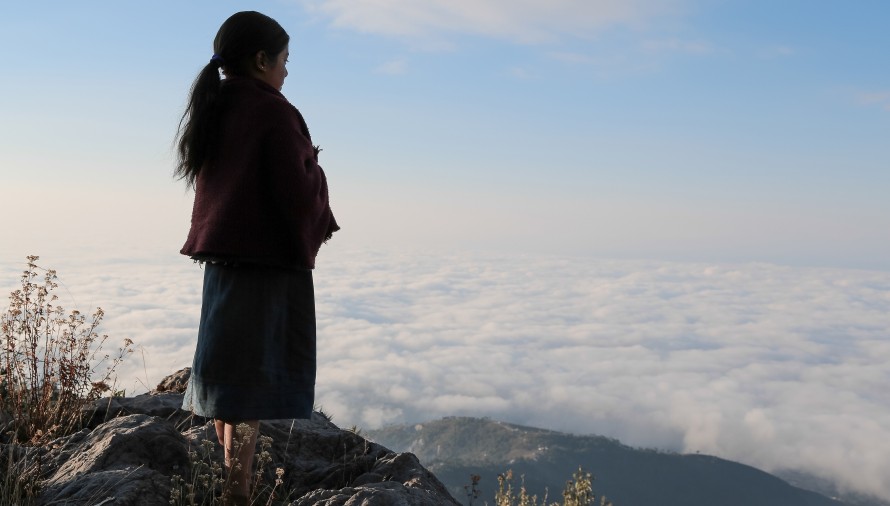
Gloria López in La casa más grande del mundo by Ana V. Bojórquez and Lucía Carreras
In the press release on this year's programme, there is mention of protagonists bearing heavy weights. Protagonists denied their childhood because the responsibilities they carry are too great. How do children and young people manage, and how do they escape from their situations?
I asked myself that when watching several films this year: "How do they manage?" In almost all of the films, the young protagonists want to change something in their lives, or in their environments, and take a great deal upon themselves in order to do so. In Mina Walking, a Canadian-Afghan production filmed in the streets of Kabul, 15-year-old Mina carries the entire weight of the world on her shoulders: Her father is a junkie, her mother has been killed by the Taliban, the grandfather suffers from dementia, the house has been destroyed by war. She keeps her chin up despite the circumstances, her family, the expectations that go along with womanhood. It's a miracle that she doesn't lose courage. But she has no choice and in the end, finds the strength within herself. She vehemently rejects a marriage that would be lucrative for her family, and instead decides to buy a burqa so she can go begging in the city. That difficult decision that she makes on her own is her way out.
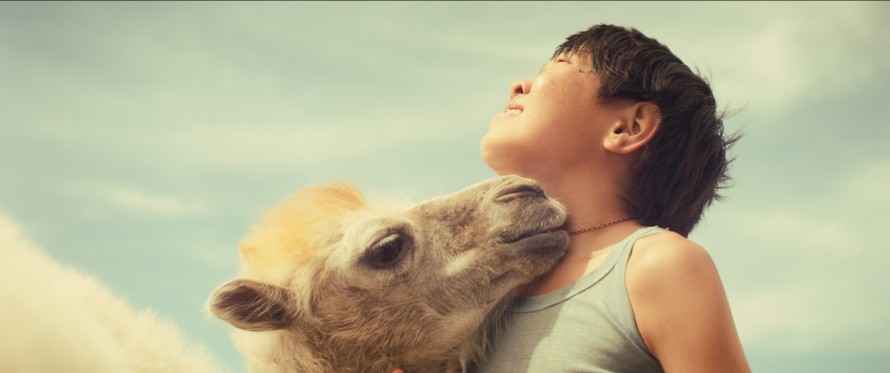
Mikhail Gasanov in Nebesnyj Verbljud by Yury Feting
That kind of strong, self-accountable young character can also be found in the Kplus programme. Nebesnyj Verbljud (Celestial Camel) from Russia takes place in the steppes of Kalmykia. A mother camel has strayed to search for her foal, which has been sold. Twelve-year-old Bayir goes off alone on a motorcycle much too big for him to find the camel and bring it back to his family, whose survival depends on it. Bayir takes that responsibility upon himself and has one adventure after the other.
Min lilla syster (My Skinny Sister), a Kplus film for viewers 12 years and over, is about a sister relationship. When the younger sister notices her older sister's eating disorder and confronts her, the older one forbids her to tell the parents their "shared secret". That's a big responsibility too. But the younger sister reacts with sensitivity and ends up handling the situation better than their helpless parents.
The different strategies the protagonists find to confront their problems are indeed impressive. But I definitely also look at it critically: When children can't be children, it means there is something wrong in this world.
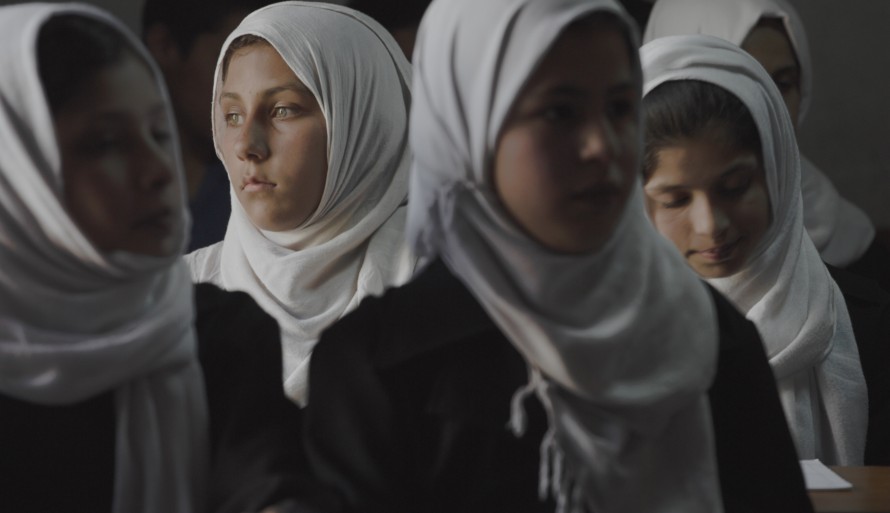
Farzana Nawabi and Farima M. Nazir in Mina Walking by Yosef Baraki
Are there films in which the burdens are too heavy for the young people to bear?
No, actually, though of course that's relative. Going begging in a burqa isn't really a way out. Mina Walking doesn't have a happy end; it remains very open and with that, carries the potential for change. As an adult one is inclined to say, it's too intense, we can't load something like this onto the young audience. But I'm certain that our viewers will feel the hope which the film alludes to again and again.
Is content also conveyed through form?
Yes, definitely. In Cloro (Chlorine) from Italy, for example, that creates a stark contrast between highly atmospheric underwater images, flooded with light, and the bleak, grey, clammy solitude of a cabin in the middle of an abandoned skiing region. The images transport the emotions of the 17-year-old protagonist, who has moved from the Italian coast to the mountains with her depressed father and her little brother. She misses her old home, her friends and synchronised swimming.
The Diary of a Teenage Girl is an US-American independent film in which 15-year-old Minnie discovers her sexuality, explores a lot, experiments, takes herself to her own limits. She writes her desires and problems in a diary, and those diary entries are animated into comic sequences.
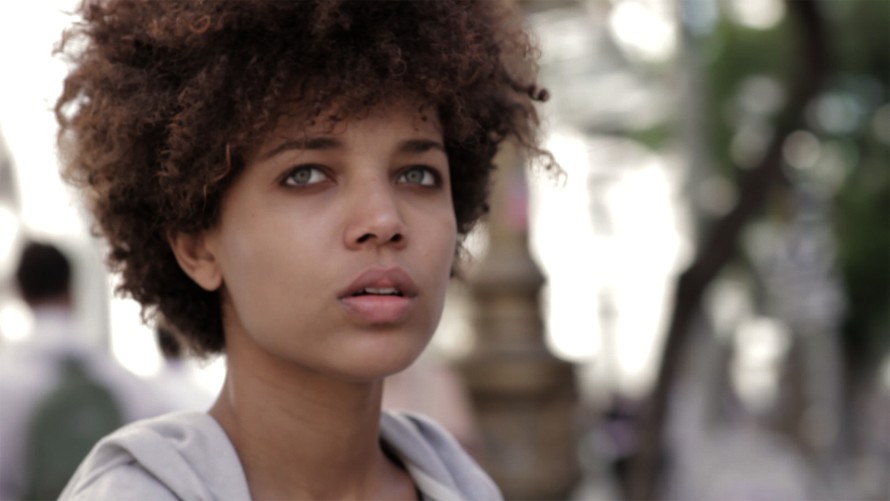
Manuela Hidalgo in #Ya by Ygor Gama und Florencia Rovlich
The many short films in this year's programme also come in powerful forms. Bloodlines is an US-American short film where two brothers compete for the attention of their strict father. The film has no dialogue; the severity and harsh interaction is communicated through voiceless glances. In #Ya (#Rise), the subject is revolts by young people in Argentina - they throw rocks, write on walls, run off. The film's frenzied editing pace transports a specific attitude. And in the Kplus programme we're showing Kacey Mottet Klein, Naissance d’un acteur (Kacey Mottet Klein, Birth of an Actor) by Ursula Meier, whose film L'enfant d'en haut (Sister) screened in Competition in 2012. In her short film this year, the young actor Kacey Mottet Klein - who starred in L'enfant d'en haut - comments on film excerpts and talks about his acting, his experiences and evolution during filming. He'll be attending the premiere with Ursula Meier and I'm very much looking forward to meeting them both. The documentary The Face of Ukraine: Casting Okana Baiul, in turn, focuses on girls at a film casting for the role of a Ukrainian ice dancer who won the first Olympic gold medal for Ukraine in the mid-1990s and is now a national hero. One after another, the girls come to face the camera and answer questions posed by the casting agent, off-camera. Some of the girls get very emotional and a few start crying, because the questions can also be applied to the current situation in Ukraine.
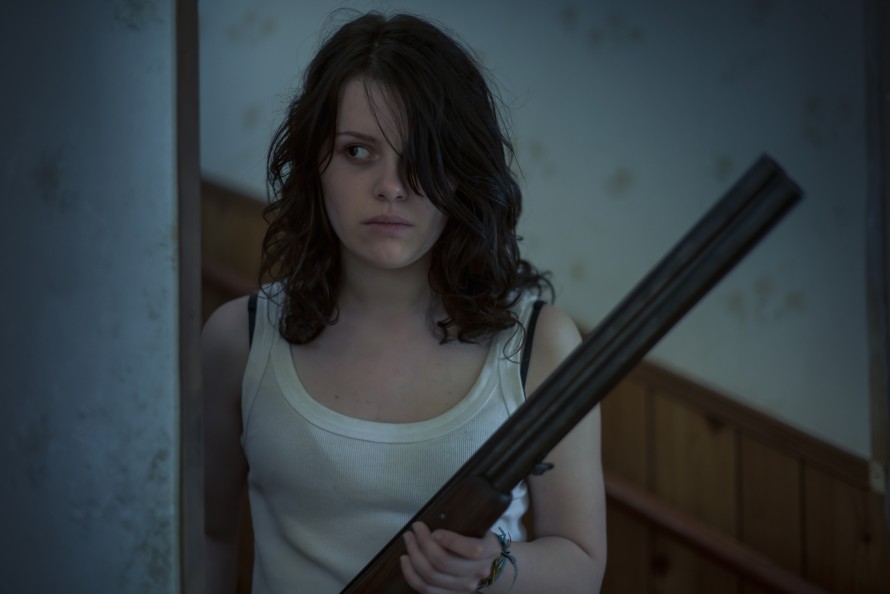
Fatime Azemi in Flocken by Beata Gårdeler
Hermetic Worlds
A noticeable number of films take place in rural areas: the Gobi desert, a forest in northern Sweden, the plateaus of Guatemala.
Vast landscapes are indeed the setting for many of the films this year and the focus is on hermetically sealed worlds within them. Flocken takes place in a village community in northern Sweden. On one hand it's a country idyll, with forests, valleys and mountains, but what happens in this remote community is very dramatic. A 17-year-old girl is raped by a fellow student. When she speaks up, the community doesn't want to accept the fact that something like that can happen there. Even the church pastors accuse her of trying to denigrate the community. The situation gets worse and worse, and there are violent attacks on her and her family. The insularity and narrowness is clearly perceptible, and what is supposed to be cohesion becomes a threat. Things are less dramatic in other films. In Dorsvloer vol Confetti (Confetti Harvest), Katelijne is growing up in a strict protestant community in the Netherlands. She feels like many girls at her age, is discovering her body, wants to listen to music, hang out with her friends - all of which is infernal stuff according to her family and the church. Katelijne loves her parents, but in the end she manages to disengage from them, step by step. And in One & Two, an independent US-American film in which a pair of siblings with supernatural abilities lives with their parents in the country, isolated from the rest of the world by a giant wall. The landscapes and environments are not only physical, but also digital; for example in Wonderful World End, two Japanese girls communicate solely via chats and on smartphones.
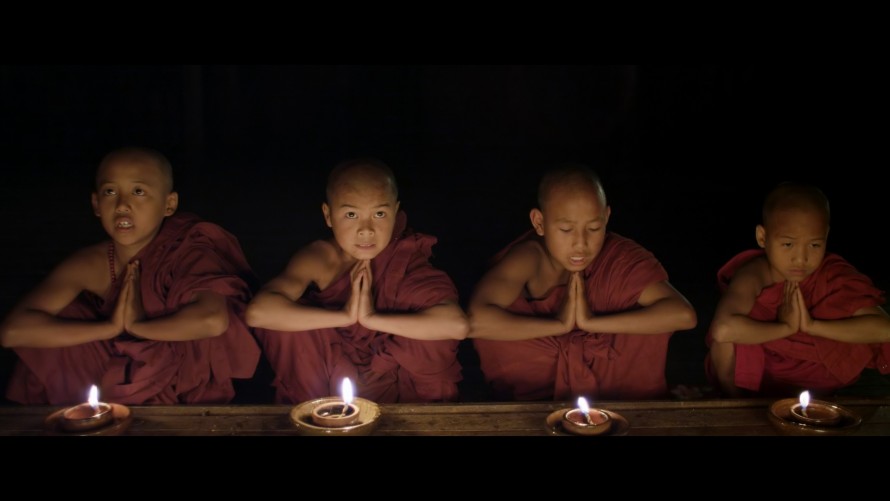
Shine Htet Zaw, Ko Yin Saw Ri, Ko Yin Than Maung and Ko Yin Maung Sein in Golden Kingdom by Brian Perkins
So it's through limitations that the urge to change something arises?
Indeed, in some films you can see very clearly how boundaries unharness energies and the urge to take action in the protagonists. But it depends a lot on the burden that must be borne. In many cases it's not primarily about staging a coup, but about dealing with the circumstances. La casa más grande del mundo (The Greatest House in the World) portrays one day in the life of a little Mayan girl named Rocío. She's seven at most, and lives with her mother and grandmother in the Andes, high up in the mountains of Guatemala. Every day, the herd of sheep has to be taken to graze. But Rocío's mother is pregnant and when she goes into labour, little Rocío has to take care of the sheep alone and overcome her fears. And she does! When she finally returns home in the evening, she wants to tell her mother about her day. But her mother is busy with the newborn.
So it's less about breaking free - Rocío probably wouldn't know where to go, she doesn't know anything else - than it is about facing the challenges of life head-on. Similarly, in Golden Kingdom by Brian Perkins, which was filmed in a monastery in Myanmar, young monks must fend for themselves after their teacher has to leave one day.
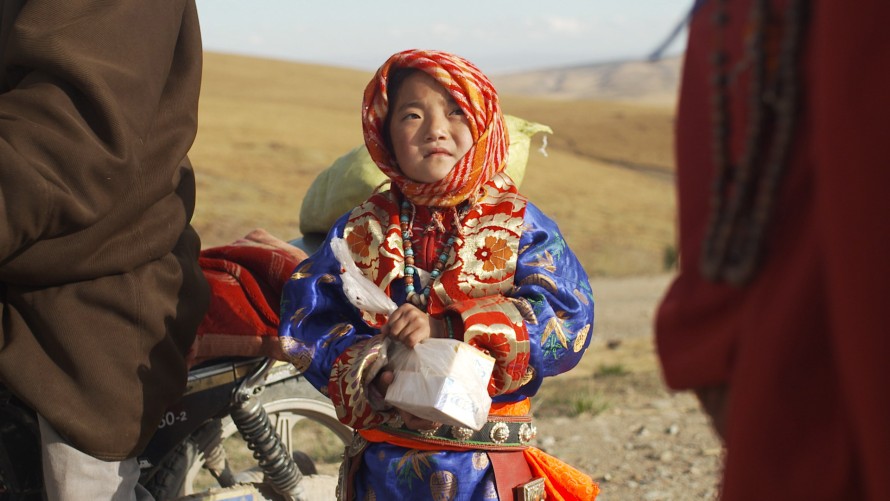
Yangchan Lhamo in Gtsngbo by Sonthar Gyal
Buddhism in Kplus and the discovery of sexuality in 14plus
Religion seems to be a big theme this year. You described the overly tight constraints of the Christian religion in the film you mentioned. What other facets can be found in the programme?
What's truly remarkable is that there are five films in the Kplus competition dealing with Buddhism - some more on the surface, others more deeply. Besides the young monks in Myanmar, there's also the Thai documentary A-wang (So Be It), about two boys who decide to enter a monastery. One in order to find a way out of poverty, and the other because he's truly interested in the religion and wants to become the student of a great monk. Gtsngbo (River) has its foundations in Tibetan Buddhism. A five-year-old girl meets her grandfather, who is a Lama and lives in a cave. In Celestial Camel, which I already mentioned, Buddhist beliefs are part of daily life, and in Jia Zai Shui Cao Feng Mao De Di Fang (River Road), Buddhist practice is the traditional way of life for the Uyghure people threatened by extinction. In all five films, although the less rosy aspects of the religion are touched on, the general portrayal is positive. Not in a western, esoteric way, but very well-grounded and often with great wisdom that a young audience can absorb.
In the Indian road movie Dhanak (Rainbow), in turn, Hinduism plays a role with music, gurus and karma, but also in the form of charlatans that Pari, who wants to help her blind brother, must beware of. There's a billboard advertisement that features Bollywood star Shah Rukh Khan promising "new eyes", so they set out to find him.
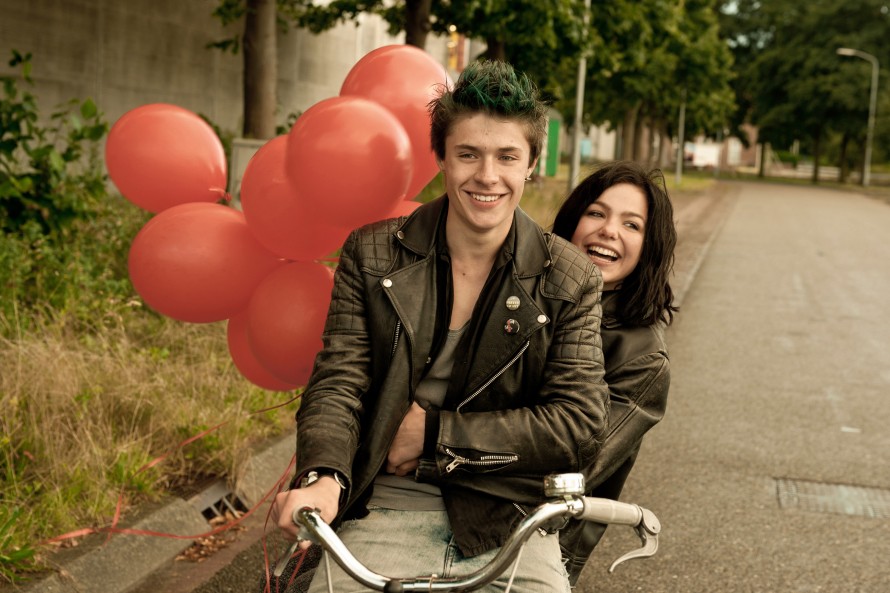
Gijs Blom and Abbey Hoes in Nena by Saskia Diesing
As always, the discovery of sexuality plays a big role in a number of 14plus films. Is there any development in particular that you've noticed with that subject over the years?
That varies year to year. And this year again, we have the most diverse facets of that theme. Sometimes it's about a feeling of spring awakening, like in The Diary of a Teenage Girl or Nena, a Dutch-German coproduction with shooting star Abbey Hoes and Uwe Ochsenknecht, who plays her paralysed father and is relegated to a side story in all the excitement of first love. Sometimes it's about gender, like the lesbian love hinted at in Wonderful World End. The opening film, Prins (Prince) from the Netherlands, in which the protagonist does his very best to make a good impression with a girl, and the Italian film Short Skin, about an overly tight foreskin, are both highly entertaining, but simultaneously look at things in depth and sketch an interesting picture of the relationship between the protagonists and their mothers. And this year we also have a few sweet nerds who tend towards clumsiness when approaching the opposite sex.
With regard to that theme, El Gurí (The Kid) from Argentina is a relatively atypical 14plus film. It's not about sex, at least not directly, and the main character is only ten years old. What I find interesting here is the mix of perspectives that results from the cast of characters and the way the secrets of the adults come to light. A highly interesting film for viewers of any age.
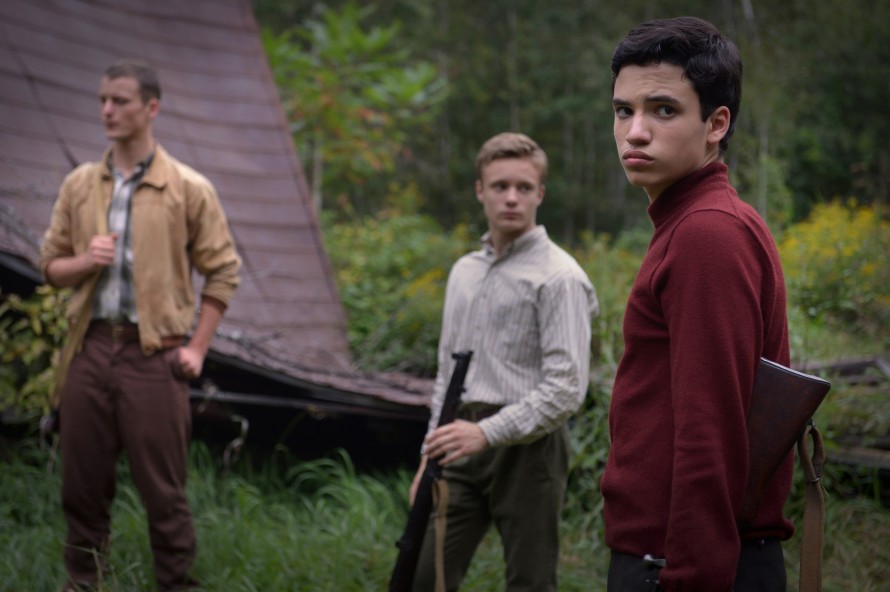
Félix-Antoine Duval, Antoine L’Écuyer and Anthony Therrien in Corbo by Mathieu Denis
In both competitions there are numerous films that take place in the past. What influence on the narratives and style does that bring to the films?
I'm not fond of films that rely solely on setting and costumes, and most of the films are very anchored in the here and now. But there are in fact a number of films in which the time frame plays a significant role in the dramatisation. Corbo is based on historical events. At the centre is a young Canadian man who joins a violent political movement fighting for the independence of Québec in the 1960s. Kar Korsanları (Snow Pirates) takes place during the Turkish military dictatorship in the 1980s. A group of boys sets off out into the snow in search of scraps of coal. The political aspects form the framework of the film, and in the Q&A, director Faruk Hacıhafızoğlu wants to draw some connections to Germany and the young coal thieves of post-World War II. In The Diary of a Teenage Girl, the historical setting conveys an atmosphere: The wild 1970s in San Francisco, full of sex, drugs and rock'n'roll. The older generation is so liberal that the girl can't find something to grasp onto, she keeps going further and does things that she regrets later. One film that I definitely want to mention here is the South African documentary Coming of Age. It follows four young people over a period of two years, living in the highlands around Lesothos and their growing up processes. Rituals play a big role, and it made me think of how important those kinds of milestones can be for young people, as a means of consciously perceiving their path to adulthood. Too few limitations and too many possibilities can also hold danger.
This year the festival and the European Film Market are both significantly widening their spectrum to include serial formats. And Generation is presenting a series for the first time as well...
We'll be showing the first five episodes of the Danish series Heartless. A great way to close the programme, on the last Sunday, the Berlinale Publikumstag. And in another special screening we'll have That Sugar Film, a documentary with a Supersize Me style that humorously illuminates the consequences of sugar consumption. That will also screen on Publikumstag, in cooperation with Culinary Cinema.